Technology
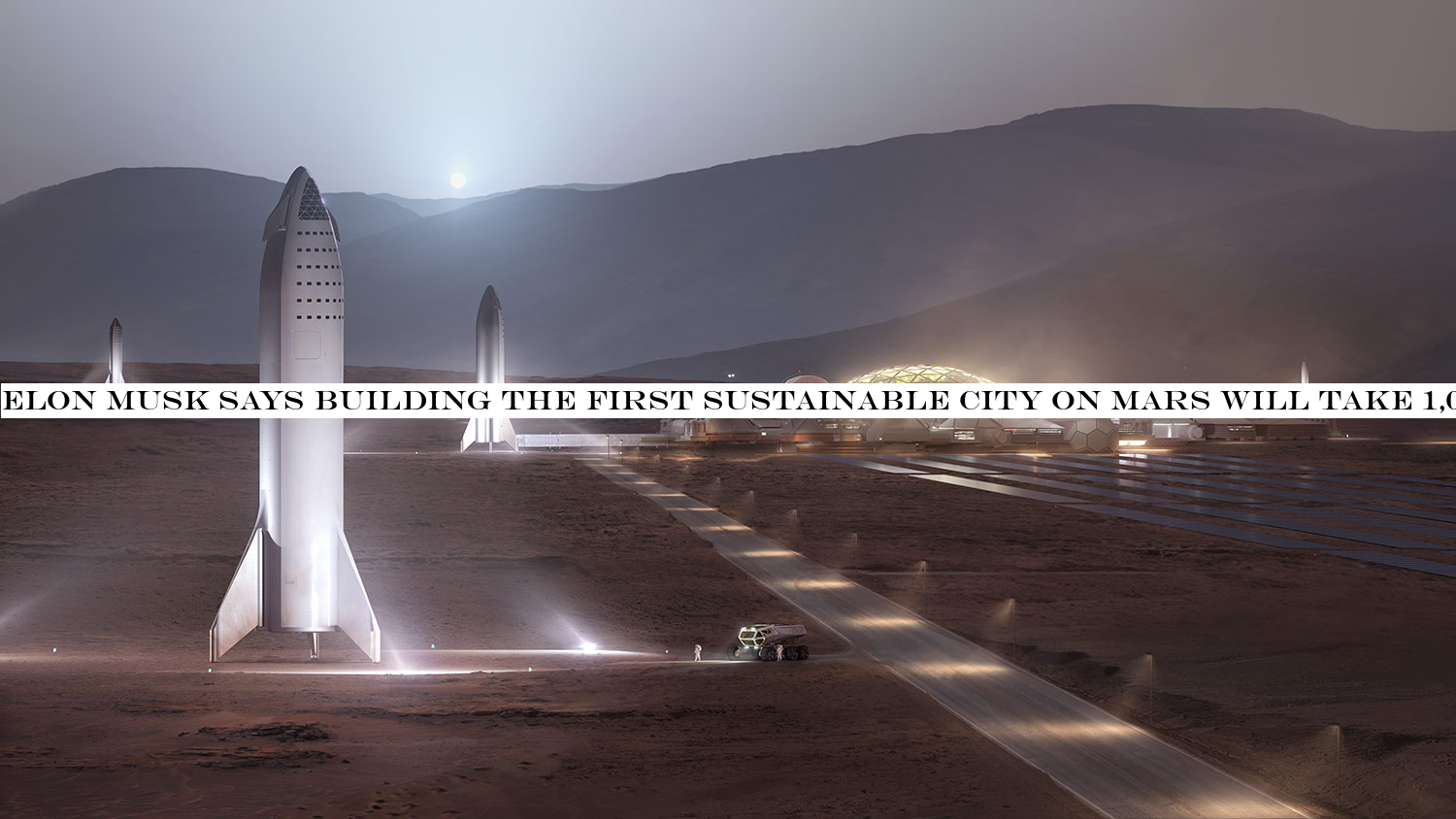
SpaceX CEO Elon Musk went into a bit more detail about the timelines and vehicle requirements to not only reach Mars, but to set up a sustainable base on the Red Planet that can serve as an actual city, supporting a local population. Thatthe long-term vision for Musk and his space technology company, after all — making humans an interplanetary species. The timeline that Musk discussed today, replying to fans on Twitter, might be incredibly impressive or incredibly ambitious, depending on your perspective.
Addressing a question about comments he made earlier this week at the U.S. Air Force startup pitch day event in California, Musk said that his stated launch cost of only around $2 million per Starship flight are essentially required, should the final goal be to set up a &self-sustaining city on Mars.& In order to make that city a reality, he added, SpaceX will need to build and fly around 1,000 Starships according to his estimates, which will need to transport cargo, infrastructure and crew to Mars over the course of around 20 years, since planetary alignment only really allows for a realistically achievable Mars flight once every two years.
Musk addressed more near-term potential for Starship as well, including how much payload capacity Starship will provide for Earth orbital transportation. Starshipdesign is intended to maximize re-use, and in fact Musk noted that ideally it can fly up to three times per day. That amounts to more than 1,000 flights per year per Starship, which means that if they end up with as many Starships as they currently have built Falcon rockets (around 100) and those can each transport as much as 100 tons to orbit, then on an annual basis, SpaceX will be able to launch upwards of 10 million tons to orbit per year.
To put that in perspective, Musk points out that if you take all cargo-bearing spacecraft currently in operation into account, the total payload capacity is just 500 tons per year — with Falcon series rockets from SpaceX itself making up around half of that.
Thata lot of payload; in fact, itprobably more than there will be demand for in any near-term time scale. But italso true that Musk envisions a future where orbital space is a much busier place, and a staging ground for orbital cargo transfer and refueling as Moon and Mars-bound spacecraft ready themselves for the outward journey.
Of course, to set up a permanent, sustainable city on Mars, we first have to get there with a crewed flight. Thereanother step between now and then, which is landing astronauts back on the Moon. NASA has set 2024 as its goal for that milestone, and SpaceX has said it hopes to land Starship there by as early as 2022 to help with staging in preparation for that landing. In the past, Musk has discussed crewed Mars mission also taking place as early as 2024, but that goal seems mighty aspirational (as do most of his timelines) from where we sit today.
- Details
- Category: Technology
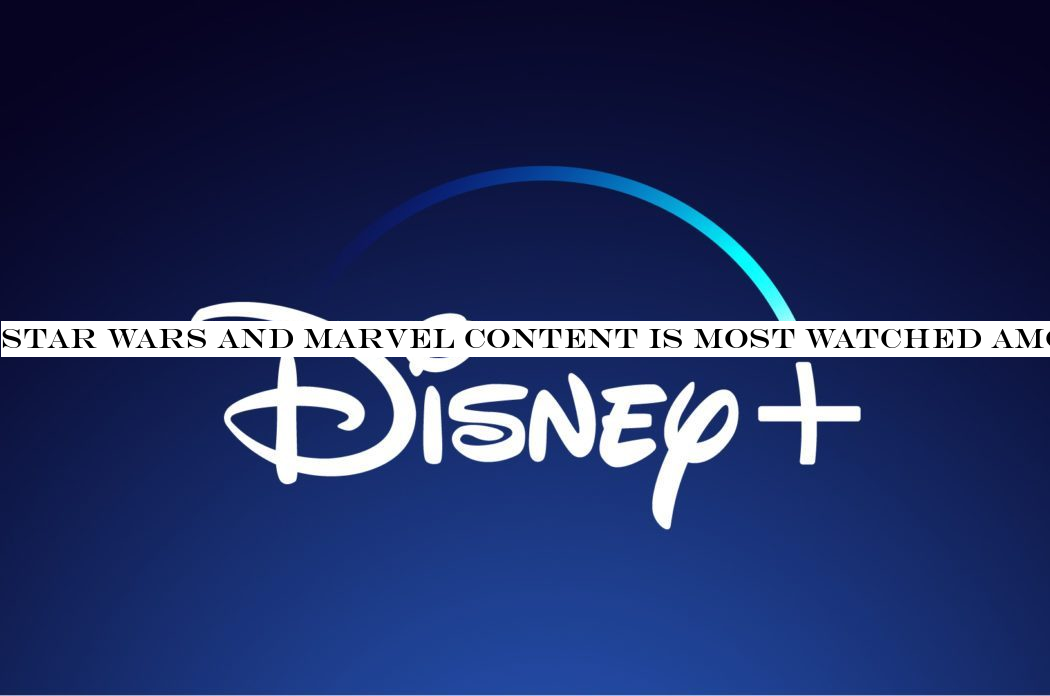
Early adopters of Disney+ are mostly watching Marvel and Star Wars movies and TV shows, according to a new third-party report by SimilarWeb out today. The analytics firm measured Disney+ usage in its debut market, the Netherlands, where the service went live for a trial run back in September ahead of its global rollout, and has details on which specific titles are doing well so far.
This soft launch gave Disney a chance to work out some of the kinks before its wider availability starting in the U.S. and Canada on November 12, which will soon be followed by other international markets.
But the launch also gave third-party measurement firms early insight into what content is performing best on the new streaming service.
In the Netherlands, six of the top 10 most-viewed programs during the first month were TV series, and just four were movies. This included the most-watched film and No.1 most-watched program, Marvel Studios& &Avengers: Infinity War.& That was followed by the TV series &MarvelAgents of S.H.I.E.L.D.,& then &Star Wars: The Clone Wars,& and Marvel Studios& &Black Panther,& which rounded out the top 5.
Star Wars and Marvel content also dominated the top 10 lists of the most-viewed movies and TV shows during this time. Marvel snagged four of the top spots for most-viewed series, while Star Wars grabbed two others.
Meanwhile, Marvel movies grabbed three of the top spots among most-watched movies during the first month, while Star Wars grabbed four other spots.
Though the data is early and limited to a single market, it does seem to point to Disneynewer franchises — rather than its timeless animation classics or even its Pixar hits — as being the biggest draws among Disney+first users.
But this also could mean that Disney will need to do more to convince families with younger children of the need to subscribe in order to gain access to Disneykids& content. Kids& programming is something thatrelatively plentiful these days across rival streamers, including Netflix, Hulu, Amazon Prime — and even HBO, which has a deal with Sesame Workshop. (And its upcoming service HBO Max has already locked down new Sesame Street episodes.)
Modern streaming services long ago realized that funding and licensing childrenprogramming was an easy way to get entire families on board — which meant more users, more watch hours and more expensive subscription plans. Even the recent newcomers to streaming are following the same path, as Roku has with the launch of its Kids - Family section on its free The Roku Channel.
The new streaming data arrives as Disney reported its fiscal fourth-quarter earnings on Thursday. The company beat Wall Street expectations with earnings per share of $1.07, adjusted versus $0.95 expected, and revenue of $19.1 billion versus $19.04 billion expected. The company also announced the availability of the Disney+ app on Amazon Fire TV, which will also go live on November 12.
During an earnings call with investors, Disney CEO Bob Iger said the Disney+ test in the Netherlands indicated the service is appealing to a &far broader& demographic group than the company expected.
However, recent U.S. survey of 1,500+ consumers, hosted by the recommendations app Likewise, found that more men than women were interested in subscribing to Disney+ (46% men said they were considering versus 37% women). It also found interest in the service skewed younger with 58% of millennials indicating interest versus 38% of Gen X and only 21% of Boomers.
The full results from SimilarWebDisney+ study are below.
Top 10 most-viewed content in September in the Netherlands:
- Marvel Studios& Avengers: Infinity War (movie)
- MarvelAgents of S.H.I.E.L.D.(series)
- Star Wars: The Clone Wars (series)
- Star Wars Rebels (series)
- Marvel Studios& Black Panther (movie)
- MarvelAgent Carter (series)
- Phineas and Ferb (series)
- Incredibles 2 (movie)
- Beauty and the Beast (movie)
- The Suite Life of Zack and Cody (series)
Top 10 TV shows
- MarvelAgents of S.H.I.E.L.D.
- Star Wars: The Clone Wars
- Star Wars Rebels
- MarvelAgent Carter
- Phineas and Ferb
- The Suite Life of Zack and Cody
- MarvelRunaways
- Marvel Comics& X-Men
- Disney Ducktales
- .Kim Possible
Top 10 Movies
- Marvel Studios& Avengers: Infinity War
- Marvel Studios& Black Panther
- Incredibles 2
- Beauty and the Beast
- Rogue One: A Star Wars Story
- Solo: A Star Wars Movie
- Star Wars: The Last Jedi
- High School Musical
- Star Wars: The Phantom Menace
- Marvel Studios& The Avengers
- Details
- Category: Technology
Cities have always been Americacenters of power, driving the economy forward through competition. But now, they&re ceasing to lead the countryinnovation.
As jobs and talent have clustered, expertise has spilled over urban boundaries. In locations like the Gulf Coast, Texas Triangle, Great Lakes and Southern California, metropolitan areas are cooperating across borders to share new ideas. Eleven of these have earned the title of &megaregion,& and they host some of the continentcutting-edge centers of technology.
The Cascadia Innovation Corridor — the strip of land down the West Coast from Vancouver, Canada to Portland, Oregon — is perhaps the best example. Home to powerhouses like Microsoft, Amazon, Nike, Lululemon, Boeing and Intel, the area has seen large investments from companies hoping to encourage further cooperation. Over the past five years, state and provincial governments have signed formal agreements for collaboration, and executive-filled conferences are being held to encourage new partnerships.
Why are businesses and government organizations investing so much into the region? Challenge Seattle CEO and former Washington State Governor Christine Gregoire believes itthe evolution of a trend thatbeen unfolding for decades.
&For many years, a number of international companies from Seattle have been putting Canadian headquarters in Vancouver,& she says. &So without anybody deliberately thinking about how we could work together, it was already actually happening. These organizations have decided to capitalize on [what] was happening from the ground up, and build out a vision, and bring us all together so we can really magnify the success of whatalready happening on the ground.&
Local support
The West Coasturban centers are linked by more than shared geography and, as Gregoire jokes, a love of the Seattle Seahawks — the Pacific Northwest is characterized by an open and inclusive culture, heterogeneous populations and creating technology with a focus on social good. Economically, too, there are similarities. West Coast cities have historically turned to Asian and South Asian markets for trade, as well as looking to each other. Washington State exports more to British Columbia than it does to all other Canadian provinces combined, and if Washington State were a country, it would represent B.C.third-largest international export market.
For Bill Tam, a member of the Cascadia Innovation Corridor steering committee and former president of BC Tech, Vancouver, Seattle, and Portland have different reasons to support the megaregion.
&In Vancouver, which has a great startup ecosystem, a lot of those companies and a lot of the research organizations have really bought into this idea of being part of something bigger and more substantive,& he says. &I think on the U.S. side, what was interesting was that we saw the impetus come from larger companies — particularly Microsoft, but they&re not the only ones. Everyone from the Nordstroms to the REIs really see the value in learning and working together to try and build leverage, and to accelerate the things they want to do.&
Tamhope for the regionsuccess comes from its ability to share resources across cities. Vancouver, for instance, is known for its highly-educated workforce: the locationnature-filled setting and welcoming immigration policies attracts many qualified tech employees. With its industry focused on startups, though, it lacks larger brands and anchor companies that would help propel it onto the global stage.
The Seattle area, however, has the opposite problem. Americatight immigration regulations make it hard for companies to secure qualified talent, but the influence of tech giants like Microsoft and Amazon mean the city is a hotbed for international investment and innovation. By joining forces — and by integrating Portland, which sits somewhere between both poles — the Cascadia region, Tam believes, can emerge as a powerful global competitor.
&I think the long-term vision for Cascadia is to feel like it is an economic region that is not only the best place to build new innovations, but also a cohesive area that understands the values of collaboration,& he says. &It ties together all the responsible aspects of how we live — whether iton the sustainability agenda, the environment agenda, and how we actually treat each other as an open and diverse society.&
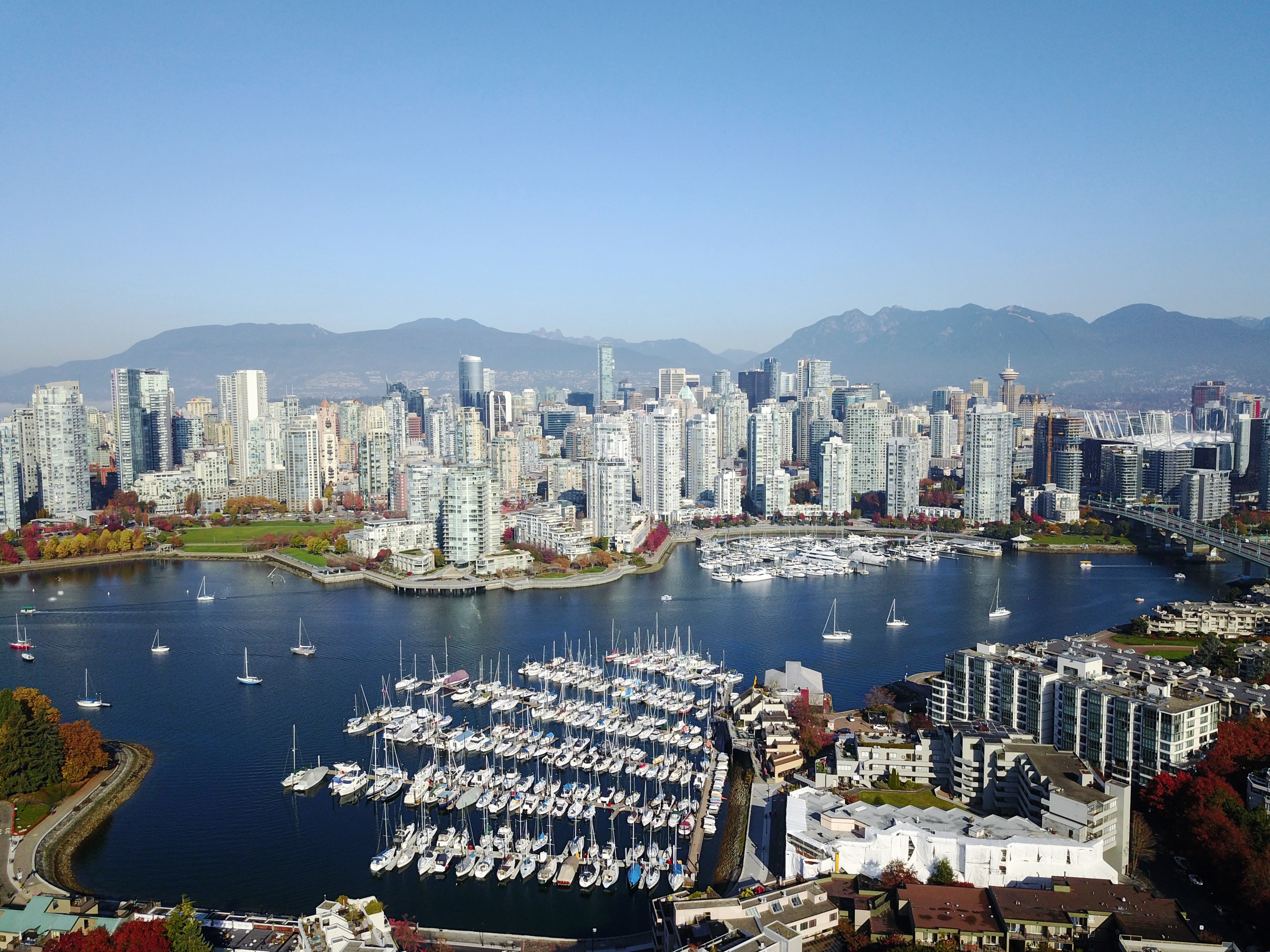
Photo: Lee Robinson/Unsplash
Areas of expertise
Aside from giants Amazon and Microsoftdominance in ecommerce, software, and cloud-based computing, the area has spawned niche areas of expertise. President and CEO of the Business Council of British Columbia Greg D&Avignon believes those sectors will help elevate Cascadiaprofile.
&Therea myriad of interesting companies here in British Columbia that are driving innovation,& he says. &In the quantum space, thereD-Wave Systems, 1QBit, and others. D-Wave is the first commercial quantum computing company in the world, and itdriving significant and complex computations on datasets to try to resolve issues that are endemic to challenges we have in terms of climate, personal health, aging, and growing populations. Life sciences is another important sector. There are some very interesting companies in the personalized medicine and health business — we&ve got Zymeworks […] and a myriad of other companies [that] are changing the nature of population-based healthcare.&
The region is also well-regarded in the virtual and augmented reality (VR/AR) space. Microsoft developed one of the leading AR headsets — the HoloLens — in the Pacific Northwest, and Vancouver has since been recognized as the worldsecond-largest VR and AR ecosystem. More than 230 companies are located in the city, drawing on its history of gaming and visual effects to develop everything from surgical-training software to AAA-aspiring titles.
As well as individual successes in the consumer blockchain space with viral game Cryptokitties and data aggregation with Hootsuite, Cascadia is known for technical apparel, with the likes of Lululemon, REI, Eddie Bauer, Arc&teryx, and Nike choosing the region as their home. With Amazonmonopoly on online retail, the West Coast leads North America in merchandizing tech.
&When we talk about some of the foundational pillars in the corridor, we&re talking about the movement of people and goods across the border,& D&Avignon says. &We&re talking about bringing together postsecondary in a way that is important. Thatall rooted deeply in how we look at making this region better. And then as we learn, how do we share that learning and those commercial opportunities with the rest of the world?&
- Details
- Category: Technology
Read more: Corporate, public investments spur interest in Pacific Northwest startups
Write comment (92 Comments)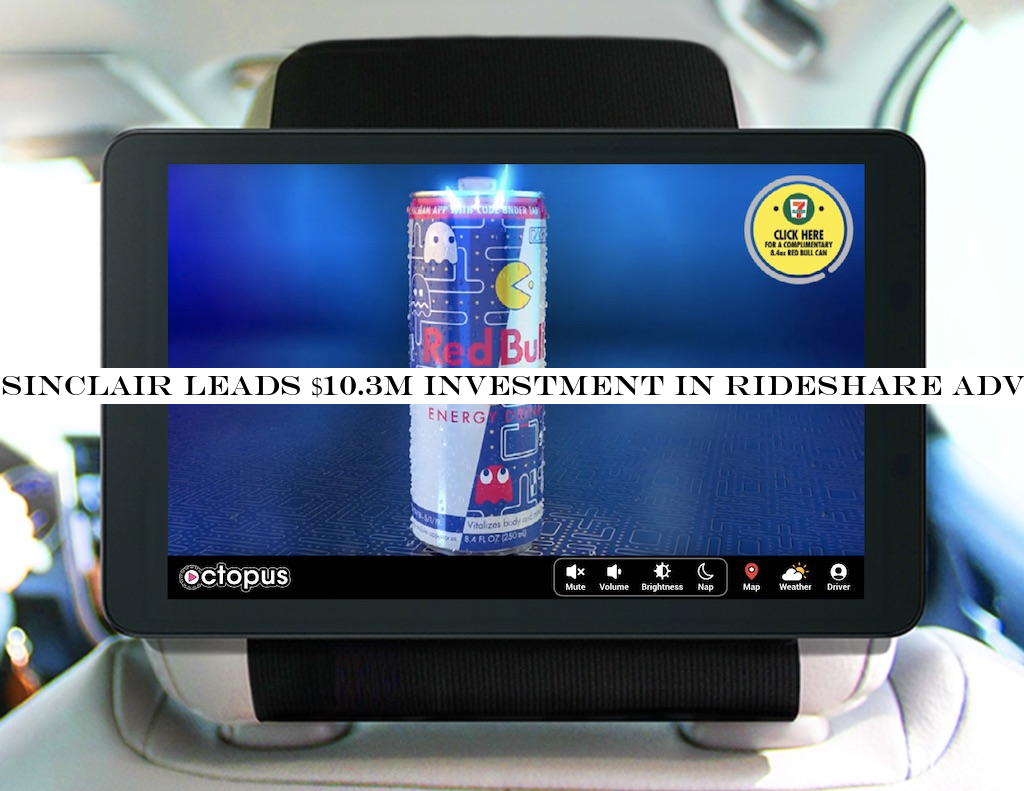
Octopus Interactive, a startup bringing an interactive TV and ad experience into Uber and Lyft rides, has raised a $10.3 million funding round led by Sinclair Digital Group.
Backseat TVs mixing show snippets and commercials have become a common part of the taxi experience in New York City and elsewhere. Octopus is offering something of a more interactive version of this concept to rideshare drivers, who can use it to keep their passengers entertained and also earn extra money.
Octopus says it provides drivers with tablets that combine games (which can include cash prizes, and can also be sponsored), ride information (like maps and weather) and advertising in a 13-minute loop. Even if the passenger doesn&t win anything, this could help keep them occupied during a long ride, which could lead to higher driver ratings. And if the passenger isn&t interested, they can just mute the screen.
The company says itdeploying technology to make the advertising smarter, for example with geofences to target ads or increase their frequency in a certain neighborhood, and by offering real-time analytics to advertisers. It also monitors the seat to confirm that thereactually a passenger sitting there when an ad plays.
After launching in 2018, Octopus says itnow reaching more than 3 million people each month across 10,000 screens in markets like New York, Los Angeles, Chicago and Washington, D.C. By working with Sinclair Digital Group — an affiliate of TV giant Sinclair — the startup can bring content from local TV stations onto the platform.
&What we see here is an untapped medium with a truly captive audience that is buckled in and looking to engage,& said Sinclair Executive Chairman David Smith in a statement. &We invested in Octopus because the team has successfully created an innovative and differentiated branding opportunity that we can help scale further.&
MathCapital, an investment firm partnered with programmatic advertising company MediaMath, also participated in the funding.
- Details
- Category: Technology
Read more: Sinclair leads $10.3M investment in rideshare advertising startup Octopus
Write comment (100 Comments)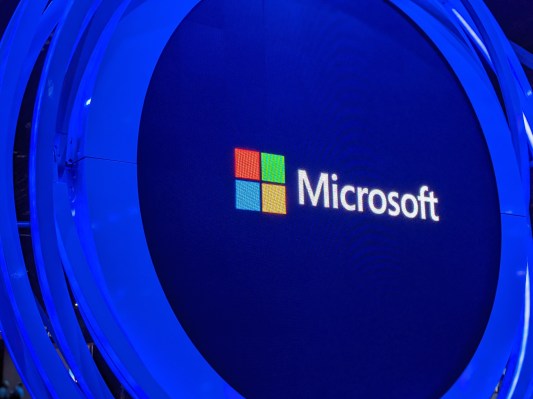
Microsoft Research is a globally distributed playground for people interested in solving fundamental science problems.
These projects often focus on machine learning and artificial intelligence, and since Microsoft is on a mission to infuse all of its products with more AI smarts, itno surprise that italso seeking ways to integrate Microsoft Research innovations into the rest of the company.
Across the board, the company is trying to find ways to become more innovative, especially around its work in AI, and itputting processes in place to do so. Microsoft is unusually open about this process, too, and actually made it somewhat of a focus this week at Ignite, a yearly conference that typically focuses more on technical IT management topics.
At Ignite,Microsoft will for the first time present these projects externally at a dedicated keynote. That feels similar to what Google used to do with its ATAP group at its I/O events and is obviously meant to showcase the cutting-edge innovation that happens inside of Microsoft (outside of making Excel smarter).
To manage its AI innovation efforts, Microsoft created the Microsoft AI group led by VP Mitra Azizirad, whotasked with establishing thought leadership in this space internally and externally, and helping the company itself innovate faster (MicrosoftAI for Good projects also fall under this grouppurview). I sat down with Azizirad to get a better idea of what her team is doing and how she approaches getting companies to innovate around AI and bring research projects out of the lab.
&We began to put together a narrative for the company of what it really means to be in an AI-driven world and what we look at from a differentiated perspective,& Azizirad said. &What we&ve done in this area is something that has resonated and landed well. And now we&re including AI, but we&re expanding beyond it to other paradigm shifts like human-machine interaction, future of computing and digital responsibility, as more than just a set of principles and practices but an area of innovation in and of itself.&
Currently, Microsoft is doing a very good job at talking and thinking about horizon one opportunities, as well as horizon three projects that are still years out, she said. &Horizon two, we need to get better at, and thatwhat we&re doing.&
Itworth stressing that Microsoft AI, which launched about two years ago, marks the first time therea business, marketing and product management team associated with Microsoft Research, so the team does get a lot of insights into upcoming technologies. Just in the last couple of years, Microsoft has published more than 6,000 research papers on AI, some of which clearly have a future in the companyproducts.
- Details
- Category: Technology
Read more: How Microsoft is trying to become more innovative
Write comment (91 Comments)Robotic arms can move fast enough to snatch thrown objects right out of the air… but should they? Not unless you want them to unnerve the humans they&re interacting with, according to work out of Disney Research. Roboticists there found that slowing a robotreaction time made it feel more normal to people.
Disney has, of course, been interested in robotics for decades, and the automatons in its theme parks are among the most famous robots in the world. But there are few opportunities for those robots to interact directly with people. Hence a series of research projects at its research division aimed at safe and non-weird robot-human coexistence.
In this case the question was how to make handing over an item to a robot feel natural and non-threatening. Obviously if, when you reached out with a ticket or empty cup, the robot moved like lightning and snapped it out of your hands, that could be seen as potentially dangerous, or at the very least make people nervous.
So the robot arm in this case (attached to an anthropomorphic cat torso) moves at a normal human speed. But therealso the question of when it should reach out. After all, it takes us humans a second to realize that someone is handing something to us, then to reach out and grab it. A computer vision system might be able to track an object and send the hand after it more quickly, but it might feel strange.
The researchers set up an experiment where the robot hand reached out to take a ring from a person under three conditions each of speed and delay.
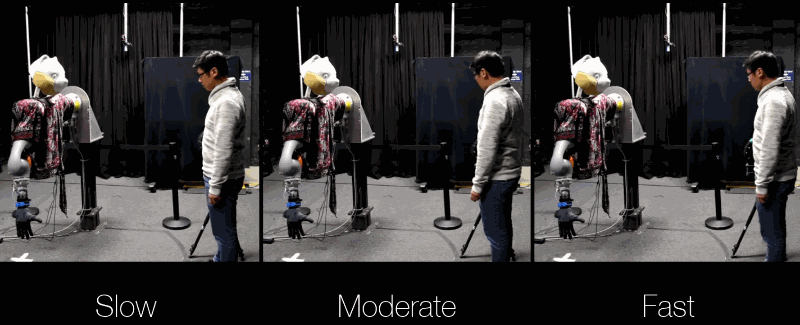
When the hand itself moved quickly, people reported less &warmth& and more &discomfort.& The slow speed performed best on those scores. And when the hand moved with no delay, it left people similarly uneasy. But interestingly, too long a delay had a similar effect.
Turns out therea happy medium that matches what people seem to expect from a hand reaching out to take something from them. Slower movement is better, to a certain point one imagines, and a reasonable but not sluggish delay makes it feel more human.
The handover system detailed in a paper published today (and video below) is robust against the usual circumstances: moving targets, unexpected forces and so on. It&ll be a while before an Aristocats bot takes your mug from you at a Disney World cafe, but at least you can be sure it won&t snatch it faster than the eye can follow and scare everyone around you.
- Details
- Category: Technology
Read more: This robotic arm slows down to avoid the uncanny valley
Write comment (91 Comments)Page 413 of 5614

 6
6